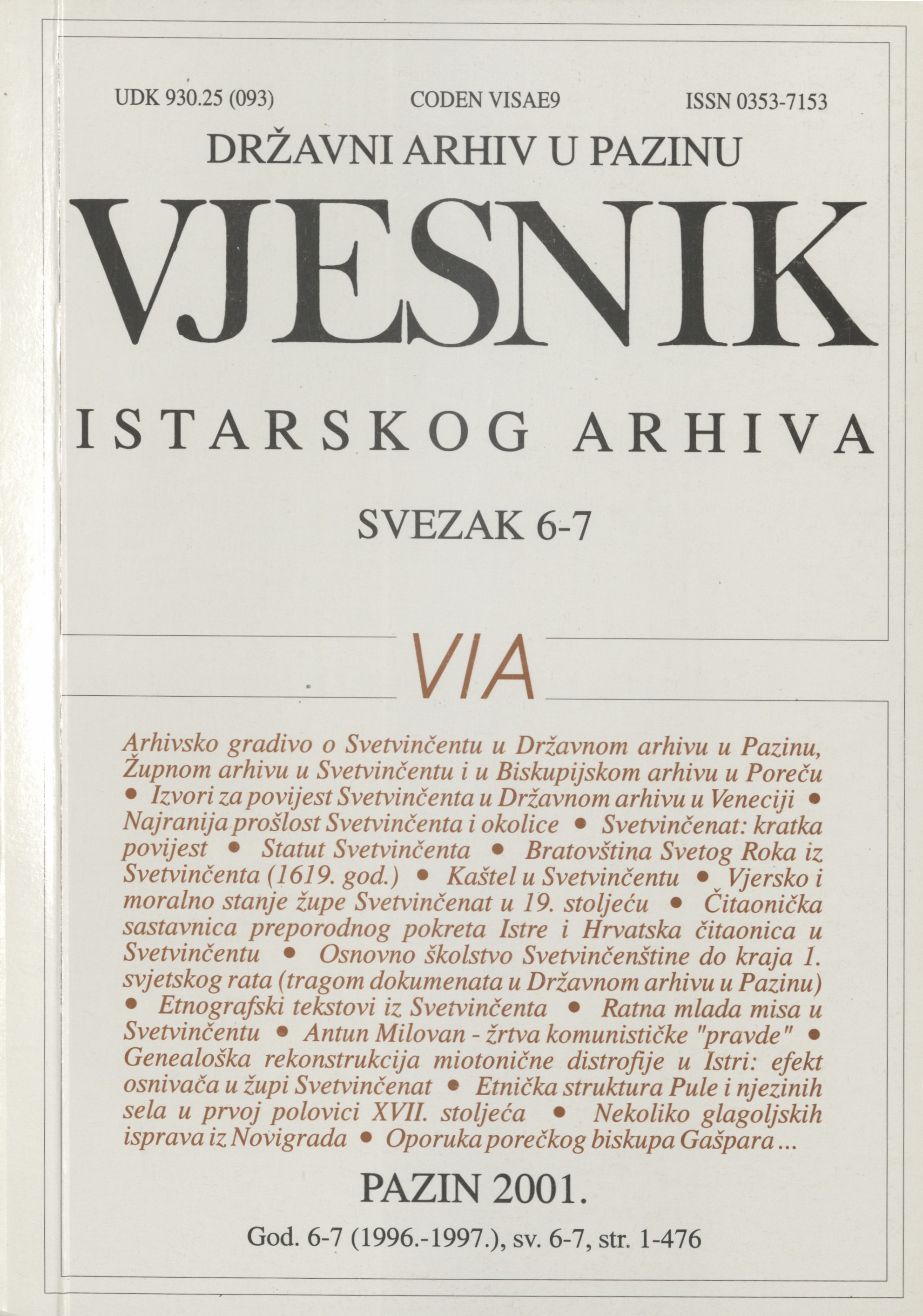The ethnical structure of Pula and its villages in the first halfofthe 17th century
Abstract
The A. presents a complete list of family names from the analysis of notarial notes from Pula and its villages in the first half of the 17th century. They are catalogued according to settlements, divided into three categories: Croatian, Italian and others (mainly Greek) family names. The paper takes into consideration eleven settlements: Pula, Kmica, Mutvoran, Marčana, Filipana, Premantura, Ližnjan, Šišan, Galižana, Fažana and Brijuni. Each family name is dated as it appears in documents. Among the most important apparent features there are many interactions between two cultural circles and changes from the Croatian to the Italian circle, and vice versa. A consequence of this phenomenon is the appearance of Croats with Italian family names (of Venetian, Furlan and Camian origin), and of Italians with family names of Croatian origin. At the end, the A. analyses briefly the distribution of Croatian and Italian family names as well as "other" family names, which family names were dominant in various settlements. In the region of Pula there were in all about 56% Italian family names, 42% Croatian family names, and 2% of "other" family names. He also singled out the most commom family names, establishing its location and frequency. The most common family names belonged to all three categories.
Downloads
Published
Issue
Section
License

This work is licensed under a Creative Commons Attribution-NonCommercial 4.0 International License.

